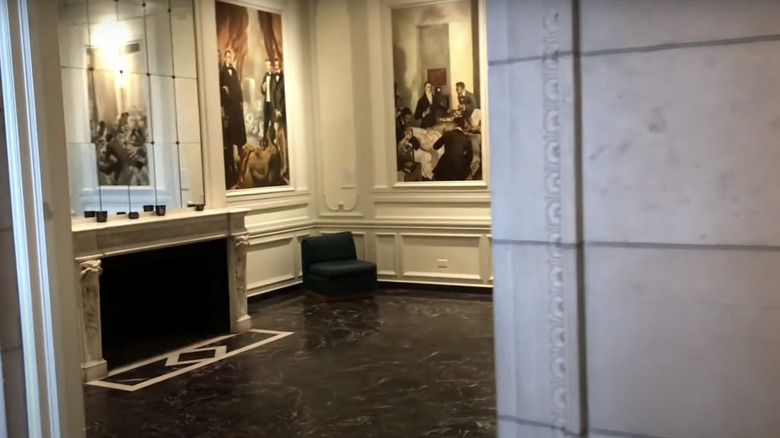A Lakeside Mansion Turned Medical Museum In Chicago Is An Underrated Family Experience
In Chicago's Gold Coast neighborhood, right by the shores of Lake Michigan, is a mansion built as a wedding present for the heiress to a match company fortune. Today, it's not a private home, and you won't find any matches inside. Instead, its four floors and 10,000 square feet are packed with antique medical equipment, fine art, and marble statues of icons of the scientific community. This is the International Museum of Surgical Science, and it's one of the most underrated spots to spend an afternoon indoors in Chicago.
"I've lived just outside of Chicago for over 30 years and only recently heard about this place. But it was a wonderful surprise!" one reviewer on TripAdvisor raved. While it may be overshadowed by other fantastic science museums in America, including Chicago's own Museum of Science and Industry, it's absolutely worth a visit. There's plenty to see in this museum, whether you're a medical professional, a history buff, or just a curious visitor in the mood for a unique and educational experience. There are museums where the architecture rivals the art, and for some, that could be true of this building. Whether or not the history of medicine catches your interest, just walking through the building is worth the price of admission. Tickets cost $30 per adult, $18 for seniors, students, teachers, and military, and $15 for children over the age of 4. Little kids get in for free.
Explore the history of medicine from around the world
In 1935, Dr. Max Thorek founded the International College of Surgeons to bring doctors from all different nationalities, religions, ethnicities, and cultural backgrounds together to promote a greater understanding of surgical medicine. Thorek acquired a beautiful mansion in Chicago, intending to transform it into a place to honor great contributors to science and use it to store historical artifacts — but over time, medical professionals from around the world sent so many artifacts that it became clear that this could be more than a private collection.
As you walk through the halls of the International Museum of Surgical Science you'll be going on a journey through the history of medicine around the world. It has more than 7,000 artifacts, from an Incan skull dating back to 2000 BC with a hole bored into it as an ancient medical treatment, to an iron lung used to keep polio patients breathing in the 1930s. On the first floor of the museum, you can even explore a full size replica of a 19th century apothecary [above]. If the history is what draws you to the museum, consider taking a guided tour. The guides will be able to provide you with more information about both the exhibits and the history of the museum than the labels on the walls.
Appreciate the art at the International Museum of Surgical Science
Just 20 minutes from iconic, artsy Wicker Park, an eclectic collection of fine art is waiting at the International Museum of Surgical Science. While the medical artifacts are fascinating, some of the most exciting exhibits to explore are actually the art collection. The most striking is certainly the Hall of Immortals, a hall dedicated to stone statues of giants in the history of medical science, like Marie Curie and Louis Pasteur. Throughout the museum, you'll get the opportunity to see more than 600 paintings and illustrations that will help you visualize medical techniques from the past. You particularly won't want to miss the Hall of Murals, a series of works by Gregorio Calvi di Bergolo, commissioned specifically for the museum to depict the development of surgery as a modern medical practice throughout history.
The museum continues to support the development of works at the intersection of art and medicine through its artist-in-residence program, which hosts solo exhibitions from contemporary artists, like 2024's Vanessa Damilola Macaulay, whose work explores how medical research interacts with the human body, and how historically that intersects with race and discrimination against Black women. Visitors are able to explore these modern exhibits along with the museum's permanent collections.

